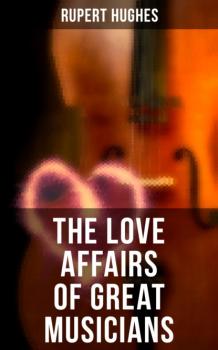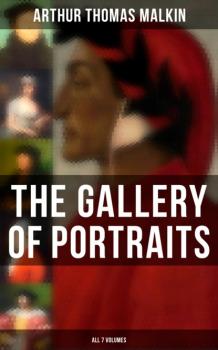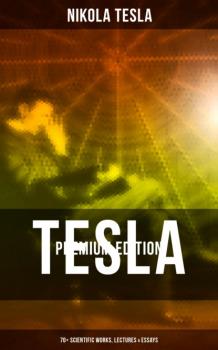Изобразительное искусство, фотография
Различные книги в жанре Изобразительное искусство, фотографияBig Ideas. Das Politik-Buch
Welche Aufgaben und Rechte hat ein Staat? Ist die Demokratie die beste Herrschaftsform? Wann ist ein Krieg gerechtfertigt?
Dieses Buch erklärt über 100 einflussreiche politische Ideen und Konzepte – von den unterschiedlichen Staatstheorien über die Entwicklung der Grund- und Menschenrechte bis zu aktuellen Herausforderungen wie Armut, Terrorismus oder Rassismus. Es zeigt spannend und anschaulich, wie Politik täglich unser Leben beeinflusst – und uns damit alle angeht.
Übersichtliche Diagramme, Chroniken und Grafiken veranschaulichen die Kernthesen und zentralen Gedankengänge auf leicht verständliche Art. Biografie-Kästen liefern Infos zu Leben und Werk der jeweiligen Denker. Jede Theorie wird durch übersichtliche Querverweise in einen historischen Zusammenhang gestellt und einer Ideenlehre zugeordnet. So entsteht eine spannende Einführung in die Politik und ihre unterschiedlichen Fachbereiche. Perfekt für Schüler, Studenten und alle politisch Interessierten!
A Study in Heredity and Contradictions
This book features a biographical account of the American writer Eugene Field (1850-1895), best known for his children's poetry and humorous essays. There were two Fields – the author and the man – and it is the purpose of this study to reproduce the latter as he appeared to those who knew and loved him for what he was personally for the benefit of those who have only known him through the medium of his writings. In doing this it was far from the author's intention and farther from his friendship to disturb any of the preconceptions that have been formed from the perusal of Field's works as these are the creations of something entirely apart from the man whose genius produced them. Contents: Pedigree His Father's First Love-affair The Dred Scott Case Birth and Early Youth Education Choice of a Profession Marriage and Early Domestic Life Early Experiences in Journalism In Denver, 1881-1883 Anecdotes of Life in Denver Coming to Chicago Personal Characteristics Relations with Stage Folk Beginning of His Literary Education Method of Work Nature of His Daily Work Pedigree Introduction to Colored Inks Some Letters More Letters Publication of His First Books His Second Visit to Europe In the Saints' and Sinners' Corner Political Relations His «Auto-analysis» Last Years Last Days
The Love Affairs of Great Musicians
This is one of the very first books on the subject that features, among other interesting love stories, a revelation of the exact identity of Beethoven's «Immortal Beloved»; the letters of Liszt to his princess; letters of Chopin long supposed to have been burned, as well as diaries and letters gathered by an intimate friend for a biography whose completion was prevented by death; the publication of a vast amount of Wagneriana; the appearance of a full life of Tschaikovski by his brother, with complete elucidation of much that had been suppressed; a detailed account of the whole progress of Clara Schumann's beautiful love story, down to the day of the marriage; and numberless fugitive paragraphs throwing new light on affairs more or less unknown or misunderstood. Volume 1: The Overture The Ancients The Men of Flanders Orland Di Lassus and His Regina Henry and Frances Purcell The Strange Adventures of Stradella Giovanni and Lucrezia Palestrina Bach, the Patriarch Papa and Mamma Haydn The Magnificent Bachelor Gluck the Domestic, Rousseau the Confessor, and the Amiable Piccinni A Few Tunesters of France and Italy – Peri, Monteverde, et al. Mozart Beethoven: the Great Bumblebee Von Weber – the Rake Reformed The Felicities of Mendelssohn The Nocturnes of Chopin Volume 2: Franz Liszt Richard Wagner Tschaikovski, the Woman-Dreader The Heart of a Violinist An Omnibus Chapter Robert Schumann and Clara Wieck Musicians as Lovers
The Confessions of a Caricaturist (Vol. 1&2)
Harry Furniss illustrated the complete works of Charles Dickens and William Makepeace Thackeray, as well as the Lewis Carroll's novel Sylvie and Bruno. Furniss wrote and illustrated twenty-nine books of his own, including Some Victorian Men and Some Victorian Women and illustrated thirty-four works by other authors. His two-volume autobiography, titled The Confessions of a Caricaturist was published in 1902, and an additional volume of personal recollections and anecdotes, Harry Furniss At Home, was published in 1904. Contents: Confessions of My Childhood – and After Bohemian Confessions My Confessions as a Special Artist The Confessions of an Illustrator – a Serious Chapter A Chat between My Pen and Pencil Parliamentary Confessions "Punch" The Artistic Joke Confessions of a Columbus Australia Platform Confessions My Confessions as a «Reformer» The Confessions of an Editor
The Gallery of Portraits (All 7 Volumes)
The Gallery of Portraits with Memoirs is a seven volumes edition which contains biographies of eminent men in literature, arts and history. Table of Contents: Volume 1: Dante Sir H. Davy Kosciusko Flaxman Copernicus Milton Jas. Watt Turenne Hon. R. Boyle Sir I. Newton Michael Angelo Moliere C. J. Fox Bossuet Lorenzo de Medici Geo. Buchanan Fénélon Sir C. Wren Corneille Halley Sully N. Poussin Harvey Sir J. Banks Volume 2: Lord Somers Smeaton Buffon Sir Thomas More La Place Handel Pascal Erasmus Titian Luther Rodney Lagrange Voltaire Rubens Richelieu Wollaston Boccaccio Claude Nelson Cuvier Ray Cook Turgot Peter the Great Volume 3: Erskine Dollond John Hunter Petrarch Burke Henry IV. Bentley Kepler Hale Franklin Schwartz Barrow D'Alembert Hogarth Galileo Rembrandt Dryden La Perouse Cranmer Tasso Ben Jonson Canova Chaucer Sobieski Volume 4: Daguesseau Cromwell Lionardo da Vinci Vauban William III. Goethe Correggio Napoleon Linnæus Priestley Ariosto Marlborough De l'Epée Colbert Washington Murillo Cervantes Frederic II. Delambre Drake Charles V. Des Cartes Spenser Grotius Volume 5: Taylor Lavoisier Sydenham Clarendon Reynolds Swift Locke Selden Paré Blake L'Hôpital Mrs. Siddons Herschel Romilly Shakspeare Euler Sir W. Jones Rousseau Harrison Montaigne Pope Bolivar Arkwright Cowper Volume 6: Raleigh Jenner Maskelyne Hobbes Raphael John Knox Adam Smith Calvin Lord Mansfield Bradley Melancthon William Pitt Wesley Dr. Cartwright Porson Wiclif Cortez Leibnitz Ximenes Addison Bramante Madame de Stael Palladio Queen Elizabeth Volume 7: Gustavus Adolphus Marc Antonio Raimondi Coke Gibbon Scaliger Penn De Thou Chatham Mozart Loyola Brindley Schiller Bentham Catherine II. Defoe Hume De Witt Hampden Dr. Johnson Jefferson Wilberforce Dr. Black Bacon Sir Walter Scott
Tesla: The Problem of Increasing Human Energy
The Problem of Increasing Human Energy is an essay written by Nikola Tesla to honor his agreement with the editor of The Century Magazine to produce an article on his findings. In this essay Tesla explained the superiority of the wireless system he envisioned, but the article was more of a lengthy philosophical treatise than an understandable scientific description of his work. He contemplates on how a man should utilize his time and body, what makes a man productive in his highest capacity, and what increases man's «energy» in the human capacity. Tesla approaches human potential energy from the physics perspective tying it to the mass, speed, and removal of retarding forces. When human civilization was just starting to impact the natural world, Tesla was already worrying about problems of overpopulating and running out unrenewable resources. He was not only pointing this out, but he was already working out the solutions.
William Cobbett (Vol.1&2)
This edition shows us the incredible life and work of William Cobbett (1763-1835), an English author, independent journalist and Member of Parliament. As an intrinsically conservative journalist, he was frustrated by the shady British political establishment of the times and gave strong support to agrarians. He, with a popular agrarian faction, argued that reforming Parliament, including abolishing «rotten boroughs», unnecessary foreign activity and suppression of wages would promote internal peace and ease the poverty of farm labourers and smallholders. He relentlessly sought an end to borough-mongers, sinecurists and «tax-eaters» (overpaid and sometimes corrupt bureaucrats, public servants and stockbrokers), also dismissing British Jews in a typecast by the same token. Early in life he was a soldier and loyal devotee of King and country, but he later pushed for Radicalism, which helped bring about the Reform Act 1832 and his election that year as one of two MPs for the newly enfranchised borough of Oldham. His much-interwoven polemics cover subjects from political reform to religion. He argued that economic improvement could support growth in global population, as an anti-Malthusian. His writing coined the metaphor «a red herring».
The Story of My Life: Memoir
The Story of My Life is an inspiring autobiographical account of one of the best-known 19th-century German novelists. The autobiography carries the reader from 1837, the year of the author's birth in Berlin, to 1863, when his first novel, An Egyptian Princess, was finished. In this captivating account, Ebers has told the story of his growth from childhood to maturity, when the loss of his health forced the turbulent student to lead a quieter life, and inclination led him to begin his Egyptian studies, which, as we know today, resulted, first of all, in the writing of An Egyptian Princess, then in his travels in the land of the Pharaohs and the discovery of the Ebers Papyrus, the treatise on medicine dating from the second century BC, and finally in the series of brilliant historical novels set in the ancient Egypt times.
My Inventions
My Inventions is an autobiographical account of Nikola Tesla, genius inventor, written at the age of 63. The content of the book was largely drawn from a series of articles that Nikola Tesla had written for Electrical Experimenter magazine. Tesla's personal account is divided into six chapters covering different periods of his life: My Early Life, My First Efforts At Invention, My Later Endeavors, The Discovery of the Tesla Coil and Transformer, The Magnifying Transmitter, and The Art of Telautomatics. Tesla tells about his life, how his inventions came to him, and even how his inventions helped save his life. He tells his encounters with famous people, his brushes with death, which happened more than once, and also about some future ideas. This autobiography provides a deeply captivating sight into Tesla's genius mind and his strange world out of time.
Tesla - Premium Edition: 70+ Scientific Works, Lectures & Essays
Musaicum Books presents to you this meticulously edited Nikola Tesla collection, formatted to the highest digital standards and adjusted for readability on all devices: Content My Inventions – Autobiography of Nikola Tesla Lectures: A New System of Alternate Current Motors and Transformers Experiments with Alternate Currents of Very High Frequency and Their Application to Methods of Artificial Illumination Experiments with Alternate Currents of High Potential and High Frequency On Light and Other High Frequency Phenomena On Electricity My Submarine Destroyer High Frequency Oscillators for Electro-Therapeutic and Other Purposes Scientific Articles: Swinburne's «Hedgehog» Transformer Phenomena of Alternating Currents of Very High Frequency Alternate Current Electrostatic Induction Apparatus An Electrolytic Clock Electric Discharge in Vacuum Tubes Notes on a Unipolar Dynamo The «Drehstrom» Patent The Ewing High-Frequency Alternator and Parson's Steam Engine On the Dissipation of the Electrical Energy of the Hertz Resonator The Physiological and Other Effects of High Frequency Currents Nikola Tesla – About His Experiments in Electrical Healing The Age of Electricity The Problem of Increasing Human Energy Talking with Planets Can Bridge the Gap to Mars Little Aeroplane Progress How to Signal to Mars The Transmission of Electric Energy Without Wires The Wonder World to Be Created by Electricity Nikola Tesla Sees a Wireless Vision Correction by Mr. Tesla The True Wireless On Reflected Roentgen Rays On Roentgen Radiations Roentgen Ray Investigations Tuned Lightning Tesla's Wireless Torpedo Tesla's Tidal Wave to Make War Impossible Possibilities of Wireless My Apparatus, Says Tesla Mr. Tesla's Vision Wonders of the Future Electric Drive for Battle Ships A Lighting Machine on Novel Principles Electrical Oscillators… Letters to Magazine Editors The Inventions, Researches and Writings of Nikola Tesla by T. C. Martin









